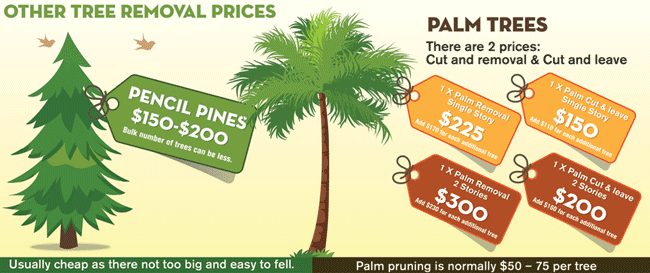Evaluating Tree Wellness: Guidelines For Deciding On Tree Removal
Evaluating Tree Wellness: Guidelines For Deciding On Tree Removal
Blog Article
Content By-Bailey Mcintosh
If you have actually ever questioned the fate of the trees on your home, understanding when it's time for elimination is crucial. However how do you identify if a tree can be saved or if elimination is the only choice? By searching for details indicators and examining safety and security risks, you can make informed choices that benefit both your landscape and your surroundings. Let's explore the crucial variables that come into play when determining the destiny of a tree and how you can make sure the most effective result for your eco-friendly buddies.
Indicators of Tree Decrease
If you see any one of the complying with indications of tree decrease in your yard, it might be time to take into consideration tree elimination.
One common indication is dead or worn out branches, which can suggest underlying issues influencing the tree's health. Keep an eye out for blemished or shrivelled leaves that persist even with proper care, as this could be a sign of disease or insects.
One more warning signal is too much leaning or a visible shift in the tree's base, which may recommend root problems or structural instability. Watch out for fungal development on the trunk or roots, as this can indicate rot and compromise the tree's security.
In addition, if you observe big splits in the trunk or major arm or legs, it's vital to attend to these concerns without delay to prevent potential dangers. Addressing these indicators of tree decrease quickly can help keep the safety and appearances of your yard setting.
Safety Worries
To ensure the wellness of your residential or commercial property and those around you, focusing on security problems connected to trees is extremely important. Trees can pose various safety and security dangers otherwise properly preserved. hedge nursery or decaying branches may fall all of a sudden, endangering people or damaging frameworks.
Leaning trees can additionally be harmful, especially if they're leaning in the direction of a building or high-voltage line. In addition, trees with extensive root systems near structures or below ground energies can cause substantial damages over time.
It's vital to routinely examine your trees for any indicators of possible risk. Keep an eye out for splits in the trunk, big dental caries, or signs of condition and decay. If you see any of these concerns, it's ideal to seek advice from a specialist arborist to examine the scenario and determine the required course of action.
Taking aggressive actions to attend to security concerns quickly can prevent crashes and residential property damages in the future. Remember, the security of your residential or commercial property and those around you need to constantly be the top concern when it concerns tree upkeep.
Consulting an Arborist
When taking into consideration the health and safety of your trees, seeking advice from an arborist is a crucial action. Arborists are trained specialists who concentrate on the treatment and upkeep of trees. landscaping yard maintenance can evaluate the total wellness of your trees, identify any type of issues such as conditions or architectural troubles, and provide professional suggestions on the best strategy.
By seeking advice from an arborist, you can receive valuable insights into the condition of your trees and figure out whether elimination is necessary. Arborists have the understanding and experience to review the dangers connected with maintaining a tree versus removing it. They can additionally offer support on alternate services, such as trimming, cabling, or supporting, to aid protect the tree whenever feasible.
Moreover, arborists can help you browse any regional regulations or permits that might be required for tree elimination. Their knowledge can guarantee that the procedure is accomplished securely and in conformity with any kind of suitable regulations.
Conclusion
Finally, when figuring out whether trees can be saved or if removal is necessary, it is very important to take into consideration signs of decline and safety worries. Consulting an arborist for a comprehensive evaluation is essential in making the most effective decision for the tree's health and possible hazards. Bear in mind, aggressive treatment and prompt action can aid protect trees and avoid crashes.
